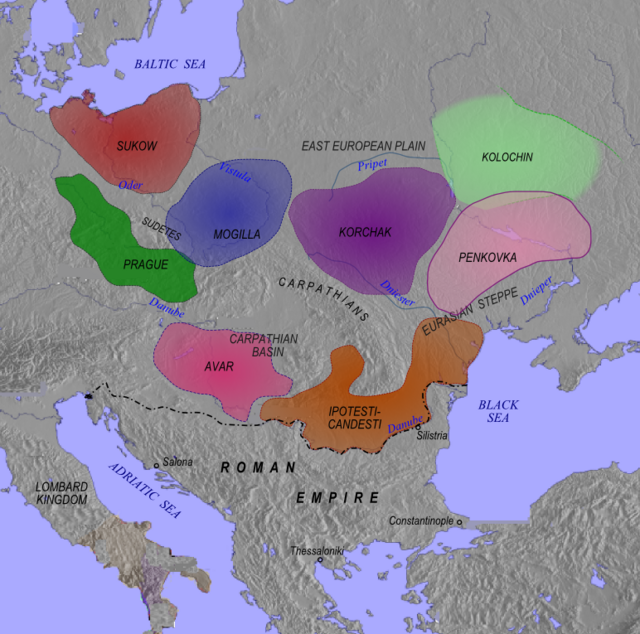Top Qs
Timeline
Chat
Perspective
Sukow-Dziedzice group
Archaeological culture From Wikipedia, the free encyclopedia
Remove ads
The Sukow or Sukow-Dziedzice group (German: Sukow-Dziedzice-Gruppe) or Sukow-Dziedzice culture (Polish: Kultura Sukow-Dziedzice), also known as Szeligi culture, was an archaeological culture attributed to the Early Slavs. Areal of sites lays between Elbe and Vistula rivers in Northeast Germany and North West Poland. The earliest sites usually date to the second half of 7th and mid-8th centuries.[1][2]

There exist different views on its origin. It has features of both Przeworsk culture and Prague-Korchak culture. In comparison to Carpathian Slavic-speaking population of Korchak-Mogilany-type some consider Sukow-Dziedzice's had different population, maybe indigenous to Poland or arrived from within Poland and Belarus or a mixture of Korchak Slavs and indigenous post-Przeworsk population.[3] Slavic archaeologists including M. Kazanski identified the 6th-century Prague-Korchak culture and later Sukow-Dziedzice group as Sclaveni archaeological cultures, and the Penkovka culture (Prague-Penkovka) with Antes.[4][5]
Remove ads
Dating
Most recent studies, based on dendrochronological evidence, conclude there is little evidence of a Slavic presence in Eastern Germany and Northwestern Poland before the end of the 7th or the early 8th century, and there was only sparse settlement till the 9th century.[6][7] The oldest dendrochronological date of Sukow settlement is dated to 591 CE, while oldest radiocarbon dating of finds to 599 CE (Bosau-Bischofswarder),[8] but according to the same data almost all early Slavic sites cannot be dated before 700 CE.[6] Also, "palynological observations indicate a fast and drastic reduction in settlement during the sixth and seventh centuries, as it is shown by a minimum of cerealia and an increasing proportion of trees; nevertheless a total lack of settlement can not be deduced".[9]
Remove ads
Later stages
The old theory mainly represented by Joachim Herrmann, who argued 7th century second wave immigration origin of later archaeological groups which replaced Sukow, is rejected by now. In that period only arrived first Slavic people of Sukow culture who didn't build yet strongholds.[10][11][12][13][14]
- Feldberg-type, also known as Feldberg-Kędrzyny or Feldberger-Gołańcz-Kędrzyny in Poland,[15] appeared mainly in Pomerania and Mecklenburg, but also Little Poland and Southern Silesia, from mid-8th to late 9th century but in some parts was preserved until 9-10th century.[16][17] Based on data collected, L. R. Lozny in 2013 considered that a minor percentage already appeared in the end of 7th and early 8th century.[18]
Remove ads
See also
References
Sources
Further reading
Wikiwand - on
Seamless Wikipedia browsing. On steroids.
Remove ads
